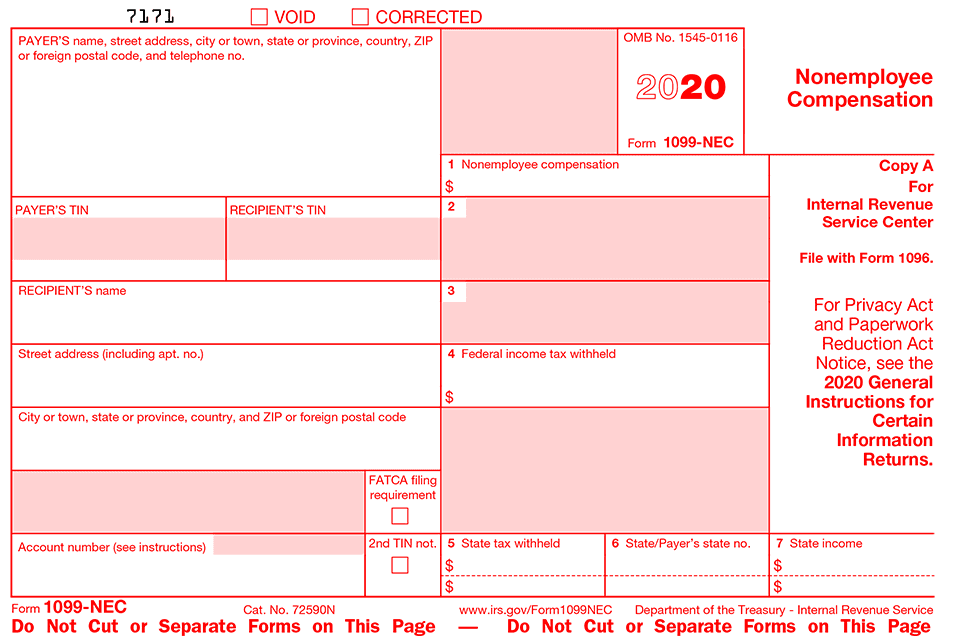No 1099? Learn How to File Personal Taxes Without One

So, you got paid in cash and never received a 1099 form—now you’re wondering how to file taxes without a 1099. If you’re a freelancer, side hustler, or picking up occasional gigs, this probably sounds familiar. Maybe a client handed you cash, or maybe they paid you through an app but never sent any paperwork.
Whatever the case, here’s the deal: yes, you still need to report that income. The IRS expects you to claim all income, even if no official form ever shows up.
The good news? It’s not as complicated as it sounds. In this guide, we’ll walk you through how to report cash income without a 1099, what records to keep, and which tools can help you stay organized and compliant—without the stress.
Table of Contents
Why You Might Not Receive a 1099

If you’re expecting a 1099 and it never shows up, don’t panic—it might be completely normal. There are plenty of situations where you’re legally paid, but the person or business who paid you isn’t required to send you a form.
Here are a few common scenarios:
- You were paid in cash for a one-off job or service.
- A customer paid you directly, not through a company or platform.
- You worked with a small business that didn’t hit the reporting threshold.
- You got paid “under the table” (no paper trail, no paperwork).
Here’s the IRS rule to know:
If a business pays you $600 or more in a year for freelance or contract work, they’re supposed to send you a Form 1099-NEC. But if you earned less than that—or if the payer isn’t a business—they might not have to send anything at all.
*That doesn’t mean you don’t have to report it. The IRS still considers that income taxable, even if it wasn’t reported by the payer.*
Yes, You Still Have to Report It—Here’s How to Keep Track
Even if you don’t get a 1099, the IRS still expects you to report all income you earn—including cash. That’s not just a suggestion—it’s a legal requirement. Whether you make $100 fixing someone’s fence or $5,000 from weekend gigs, it’s all taxable.
The tricky part? When there’s no paperwork, it’s up to YOU to keep good records. If the IRS ever asks questions, you’ll want a clear trail showing what you earned and how you tracked it.
Here are a few easy ways to stay organized:
- Bank Statements: If you deposit cash into your account, your bank records can help show how much you earned and when.
- Invoices and Receipts: Create your own invoices for each job, even if it’s just a simple Word doc or email. You can also give clients receipts and keep copies for your records.
- Spreadsheets or Accounting Apps: Tools like QuickBooks, Wave, or even Excel can help you log each payment. Make note of the date, amount, and who paid you.
- Daily or Weekly Logs: Keep a running list of what you earned. It doesn’t have to be fancy—just consistent.
*Pro tip: If you’re ever audited, having a system in place makes life a whole lot easier. The IRS doesn’t need a 1099 to check your bank records or spot inconsistencies between your reported income and lifestyle.*
How to Report Cash Income (and Stay Organized While You’re at It)

Once you’ve tracked your cash income, the next step is actually reporting it on your tax return. If you’re self-employed—even if it’s just a side hustle—you’ll usually report that income on Schedule C (shown above), which is filed along with your Form 1040.
That’s where you’ll list your total income and any business-related expenses you want to deduct. This could include things like supplies, mileage, advertising, or even part of your home internet bill if you work from home. Understanding how to file taxes without a 1099 becomes especially important here, since you’re handling the reporting yourself without relying on official forms from clients or customers.
But there’s one more thing: If you made $400 or more in self-employment income for the year, you’ll also need to file Schedule SE to calculate your self-employment tax. This covers your Social Security and Medicare contributions, since you don’t have an employer withholding them for you.
The good news? Staying organized makes all of this much easier. Here are some habits that can save you time and stress at tax season:
- Keep a simple income and expense log—daily or weekly is best.
- Save receipts, either physically or by snapping a photo and storing them in a folder or cloud drive.
- Use separate bank accounts for business and personal spending if possible. It’s cleaner and easier to track deductions.
A little effort throughout the year goes a long way. Come tax time, you’ll have everything you need to file accurately—and maybe even lower your tax bill with some well-documented deductions.
When to Take the Next Step
If your cash income is becoming steady or starting to grow, it might be worth forming a business entity like an LLC or S-Corp. Doing so can offer liability protection, simplify your finances, and even unlock potential tax benefits. It’s a smart move when you’re treating your side hustle more like a business than a hobby. Tools like FormPros can help you take that step quickly and easily, without the usual paperwork headaches.
Learning how to file taxes without a 1099 becomes even more important as your income grows and your responsibilities expand. For anything beyond basic income reporting, it’s also worth talking to a tax professional. They can help you avoid costly mistakes, figure out the best deductions, and ensure you’re not leaving money on the table.
At the end of the day, knowing how to file taxes without a 1099 is essential if you’re earning outside traditional systems. Staying organized and filing accurately puts you on solid ground, whether you’re just getting started or ready to grow.
FormPros Has You Covered
Simplify your paperwork with FormPros! From creating paystubs, W-2s, and 1099-NEC forms to generating LLC Operating Agreements and even voided checks, our easy-to-use platform has you covered. Save time, reduce errors, and handle your business documents with confidence. Start now and see how FormPros makes professional form generation fast, affordable, and hassle-free!
No 1099? Learn How to File Personal Taxes Without One FAQs
-
Do I need to make quarterly estimated tax payments if I never got a 1099?
Probably. If you expect to owe tax for the year, the IRS wants you to pay as you go using 1040-ES (typically in April, June, September, and January). A simple rule of thumb is to set aside 25–30% of your net self-employment income to cover income tax plus self-employment tax. If cash flow is uneven, pay what you can each quarter and true-up at filing.
-
I filed without a 1099, and then a client sent me one later. What now?
Compare the form to what you reported. If your return already includes that income, you’re fine—keep the form with your records. If the form causes your totals to change, file an amended return (Form 1040-X) to fix it and avoid IRS mismatch notices.
-
I was paid in cash, but I think I’m actually an employee. Does that change anything?
Yes. Employees should receive a W-2 and have taxes withheld, usually after completing a W-4. Signs of employee status include set hours, training, required methods, and using the company’s tools. If you believe you were misclassified, talk to the payer and consider professional guidance; you may be able to correct it for future pay and proper year-end forms.
-
I didn’t keep perfect records. How can I reconstruct income and expenses?
Start with objective sources: bank deposits, app payouts, calendar entries, emails/texts with clients, mileage from map history, receipts from suppliers, and even social DMs confirming gigs. Build a dated spreadsheet that ties each payment to a client/job and attach any supporting proof. For expenses, note what, when, why (business purpose), and how you paid. Consistency and plausibility matter more than fancy software.
-
I got paid through apps like Venmo, Cash App, or PayPal—will I get a 1099-K?
You might. Platforms issue 1099-K based on their settings and current IRS thresholds, especially for business accounts. But forms or no forms, the rule doesn’t change: you must report all business income. Treat peer-to-peer “personal” transfers with caution—intermixing personal and business makes record-keeping harder.
-
How much should I set aside for taxes on cash gigs?
A practical starting point is 25–30% of net profit (income minus deductible expenses). If your state has income tax, bump that up a bit. Revisit your percentage each quarter as your profit changes. Keeping a separate “tax” savings bucket helps you avoid surprises.
-
Do I need an LLC or a separate bank account to report this income?
Not required, but smart. A separate bank account keeps income/expenses clean and supports your deductions. An LLC can add liability protection and, as you grow, potential tax flexibility (e.g., S-Corp election). If you formalize your business, you’ll also want basics like an EIN and organized pay records.